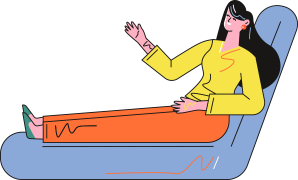How to diagnose polycystic ovary syndrome?
When suspecting polycystic ovary syndrome in females, it is essential to first inquire about the woman's menstrual history and menstrual cycle. A detailed observation of the woman's body type should be made, as some women may appear somewhat overweight and have increased body hair, such as small mustaches around the lips, and some may even have acne on their faces. In addition, a thorough physical examination should be conducted, including a gynecological examination, where some women may find an increased volume in both ovaries. Hormonal tests can also be conducted, showing elevated levels of androgens, or an imbalance in the levels ratio of luteinizing hormone to follicle-stimulating hormone. Some women may exhibit insulin resistance, with abnormalities in blood glucose and lipid levels. Ultrasound examination can show many small follicles in both ovaries on the same plane, without a dominant follicle, and the number of small follicles generally exceeds 12.
Trending Health Topics

Get the latest health & wellness news daily right to your inbox.


 Subscribe
Subscribe


